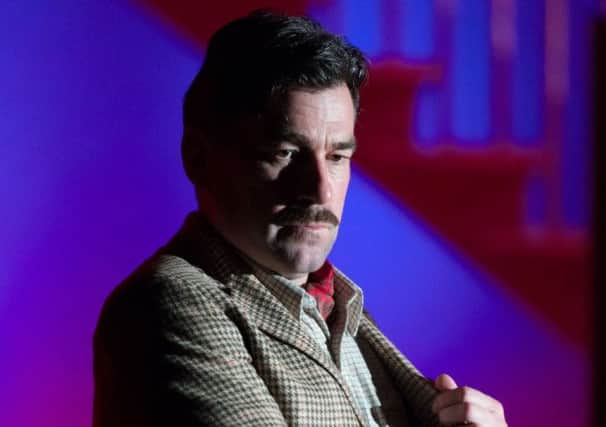Why does upper-class glitz leave us wanting more?


The dress is in deep violet silk, with a full skirt and nipped-in waist; the blonde hands a large drink to a man in a high-waisted lounge suit, and the conversation begins. Or at the Royal Lyceum, the audience watches enthralled as the opening scene unfolds on the glittering white balcony of a hotel at Deauville, a holiday resort now so out of fashion that few even know where to find it on a map of France. The man is handsome, in a beautifully cut dinner jacket, and the woman is wearing one of those narrow, rippling 1930s evening dresses that add whole new dimensions to the words “smart” and “elegant”; her skin is pale, her wit razor-sharp.
In both cases, the characters are inhabiting a world a million miles from the real life of any 21st century audience. The clothes, the accents, the mlilieu, are of a kind only ever worn, used or inhabited by a tiny privileged minority in Britain, for a few decades between, say, 1880 and 1955. Yet whether the play is Frederick Knott’s fine 1952 thriller Dial M For Murder, or Noel Coward’s glittering 1930 masterpiece Private Lives, the demand for plays like this – what Kenneth Tynan once dismissed as “Loamshire” plays, all posh voices and French windows –remains intense.
Advertisement
Hide AdOver the years, of course, dozens of radical theatre artists in Britain have tried to break the mould and introduce new theatrical voices, often with huge if transient success; ask people what John Byrne’s Slab Boys meant to them, or Willy Russell’s Blood Brothers, or Gregory Burke’s Black Watch, and they will often say that it showed them that theatre could be an art-form for and about people like them, rather than a “posh” entertainment reserved for those and such as those.
Yet for all that, surprising numbers of theatre-goers, from all backgrounds, still prefer the glamorous costumes and sheer style of an Oscar Wilde, a Coward or an Agatha Christie. Some might put it down to the sheer reassurance of watching plays from an age of British theatre when certain limits were always observed, and there were no forays into onstage nudity or “bad language”; some say that it’s escapism, although it’s a strange, nostalgic kind of ecapism that always looks backwards, and never forwards or outwards.
There is, though, a final truth about the much-revived British drama of this period; and it is that the sheer confidence of British upper-middle-class culture in those years, and the powerful enforcement of the social rules by which it lived, created a framework within which writers were able to soar to glittering heights, both in social satire and drama, and in the thriller format of the mid-20th century. In one sense, the sheer strength and durability of this repertoire is something of a tragedy for British theatre; even in the 21st century, it dooms the industry to a constant reinforcement of the idea that this is what theatre is, this nostalgic, red-plush thing with an air of social exclusion about it.
Yet at the same time, these shows celebrate a great age of artistic achievement, glittering with wit, ingenuity, and sheer formal command. Today, of course, ambitious directors often try to shake up our expectations of these plays a little – Lucy Bailey’s fine production of Dial M For Murder boasts a blood-red modern set, and Martin Duncan’s Private Lives is both sleekly art-deco and strikingly violent. Yet in the end, these plays and dozens like them stand on their merits; messages from a different world that are nonetheless so sleek, so confident, and so beautifully-made that – in a world full of uncertainty – we find it impossible to resist them.
Dial M For Murder returns to the Theatre Royal, Glasgow in June; Private Lives is at the Royal Lyceum, Edinburgh, until 8 March